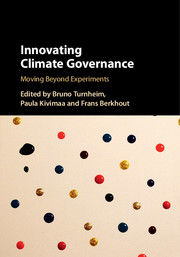2 - Global Climate Governance after Paris
Setting the Stage for Experimentation?
Published online by Cambridge University Press: 29 March 2018
Summary
- Type
- Chapter
- Information
- Innovating Climate GovernanceMoving Beyond Experiments, pp. 27 - 46Publisher: Cambridge University PressPrint publication year: 2018
References
- 6
- Cited by



